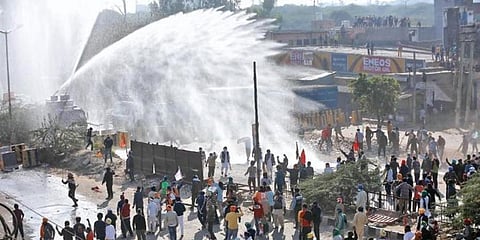

One of the big gripes of the farmers agitation against the new agricultural laws is the way they were passed. Armed with a 303-strong brute majority in the Lok Sabha, not even a pretense of discussion was offered before the 3 bills became laws in September, this year. There was no attempt to engage with farmers organizations. In the Rajya Sabha, where the Modi government was not sure of a majority, the bills were passed in September with a voice vote ignoring demands by the Opposition for a division.
Again demands for referring the bills to a Joint Select committee for legislative scrutiny were brushed aside. The Supreme Court now setting up a negotiation committee is a belated acknowledgment that the democratic process had been fractured.
Finally, federalism, or ‘quasi’ federalism as we chose to call it - a cornerstone of our polity - lay in tatters as the states were not consulted. Agriculture is one of the 66 subjects on the States’ list in our constitutional division of power which distributes areas of control between the Union, states and a concurrent list overlapping both the central and state governments. Aren’t these obvious signs of India moving to a unitary form of government?
Akhand Bharat
These are not random majoritarian tendencies but the careful unfolding of an ideological plan for ‘Akhand Bharat’. A vision of ‘One Nation, One People’. The concept of ‘Greater India’ or ‘Akhand Bharat’ was first coined by the Hindu idealogue Vinayak Damodar Savarkar in 1923. It broadly sought the cultural unification of all areas of Hindu cultural influence from Nepal to Burma, and Afghanistan in the North-West. The concept was later adopted by the RSS with a manifesto to unite the large Indian subcontinent including modern day Pakistan, Bangladesh, Sri Lanka and Nepal.
The domestic flip side of ‘Akhand Bharat’ is that ‘Bharat mata’ is a single, unitary Hindu entity; and that divisions along state lines such as Bengal, Assam, Kannada or Telugu take away from the larger vision of a single, united Hindu nation. This flies in the face of ‘federalism’ which sees India as a confluence of dozens of nationalities and regions with their own language and culture, and with their own autonomous polity.
The Constitution of India’s Article 1 deliberately defined India as a ‘Union of states’ rather than a ‘federation’ - an acknowledgement we are more ‘unitary’ than ‘federal’; but with ‘Akhand Bharat’ playing out, the centripetal tendencies towards a powerful and centralized government has strengthened. As the BJP moves into its second innings we are seeing increasing calls of One Nation, One Religion; One Nation, One language, One Nation, One market, and One nation, one ration card. The ground rules are being rewritten, and they fly in the face of India’s rich diversity.
The biggest blow to federalism was the rolling back of Article 370 for Jammu and Kashmir in August 2019. The new dispensation removed its special status of running the state with its own Constitution, its own rules on property ownership and defining who are its ‘permanent residents’, etc. Its autonomy, guaranteed under the constitution was taken away, again without consultation of the state legislature. Jammu & Kashmir - the only Muslim majority state in the country - was reduced from the status of a ‘state’ to two Union territories.
States financially choked
In economic relations, the states are being slowly choked financially and made more dependent on the Centre. The 14th Finance Commission, whose recommendations are for the period 2015-20, raised the divisible pool of taxes from 32% to 42%. But the actual range of transfers from the Centre to the states has been in the range of 30-35%. This is evident in the way the Goods and Services Tax (GST) has worked out too.
In a nutshell, the states gave up their right to direct taxation on the sovereign undertaking of the Centre that it would transfer their share with a growth prospect of 14% each year till 2022. However, with poorer-than-expected collections, the promised share of the states was drastically short of targets. For FY2021, the combined shortfall is estimated at `2.35 lakh crore, which Finance Minister Nirmala Sitharaman has flatly refused to transfer. Instead, states have now been told to borrow through various options offered by the Centre. In state-level politics, the BJP’s unitary ideology has been viewed with increasing suspicion by the regional parties.
Many have begun to feel that an alliance with the BJP in the short- or medium-term, will mean death in the long run. Nitish Kumar’s Janata Dal (U), even though he continues to be Bihar’s chief minister, has learnt the hard way and has been reduced to a rump of the Bihar BJP. In Maharashtra, the Shiv Sena, another long-standing ideological allies, is today daggers drawn with the BJP. So here’s the rub: India’s ground reality is of a pulsating mass of local ethnic and regional aspirations. These can’t be papered over by the BJP’s ‘One Nation’ theory.